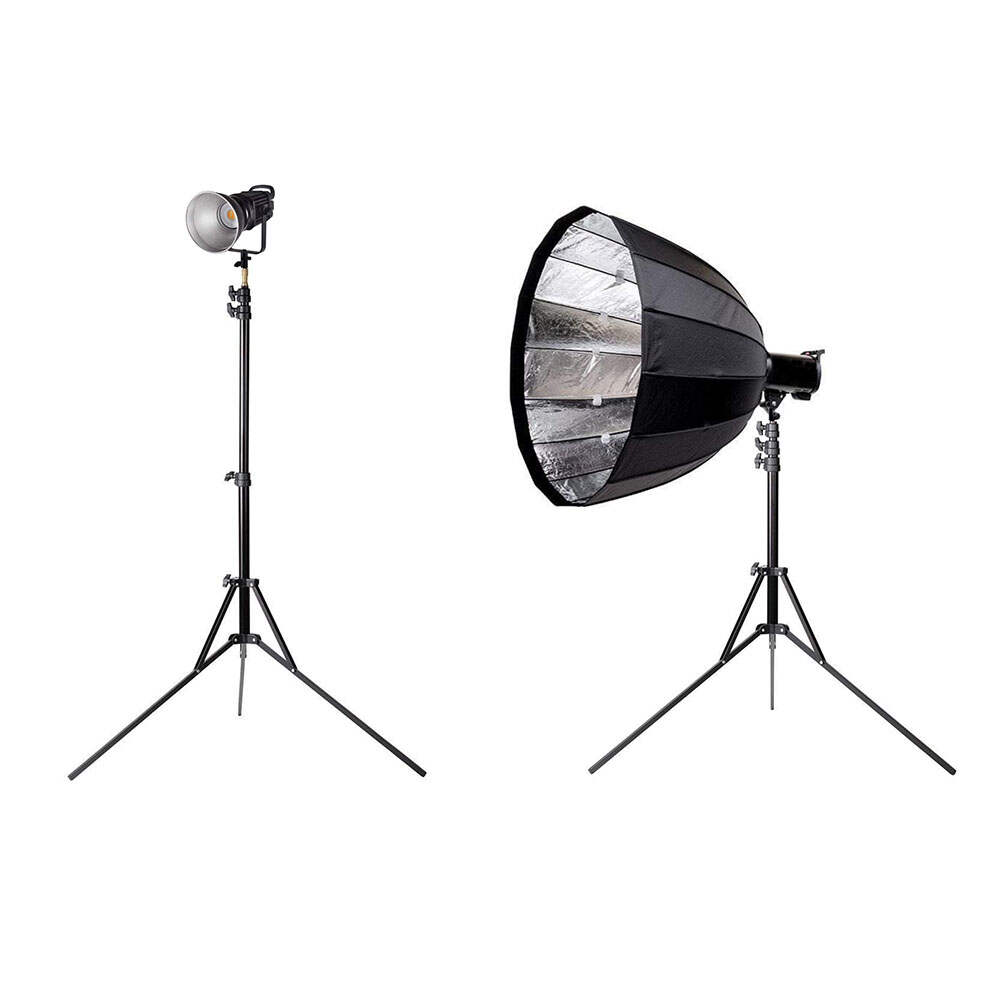Email cannot be empty
Password cannot be empty
Email format error
Email cannot be empty
Email already exists
6-20 characters(letters plus numbers only)
The password is inconsistent
Email format error
Email cannot be empty
Email does not exist
6-20 characters(letters plus numbers only)
The password is inconsistent


You’ve invested in quality lights, perfected your camera setup, and planned your shoot down to the last detail. But if your lighting gear is perched on a flimsy or unreliable stand, your entire setup is at risk.
A light stand might not seem glamorous, but it’s one of the most essential tools in a photographer’s kit. From portrait shoots to product photography, indoor studios to on-location setups, choosing the best light stand for photography can make the difference between a smooth session and a frustrating one.
Let’s break down the key factors in choosing a light stand in 2025, and explore the top types suited for different styles of photography.
A light stand does more than just hold your gear—it ensures your lighting is:
Stable and safe (no mid-shoot crashes)
Precisely positioned (for consistent results)
Adaptable to various modifiers (softboxes, umbrellas, reflectors)
Reliable over time, especially during travel or long shoots
Whether you're shooting in a controlled studio or dealing with unpredictable outdoor conditions, having the right stand means you can focus on creativity—not technical mishaps.

Best for: Home studios, budget setups, beginners
These are the most common and affordable types. China Sourcing Company.Lightweight and foldable, they often support basic speedlights or lightweight LED panels.
Pros:
Easy to set up
Lightweight and portable
Ideal for travel or casual shooting
Cons:
Limited load capacity
Less stable with large softboxes or booms
Recommended in 2025: Look for models with air-cushioning to protect your gear when lowering the stand.
Best for: Large modifiers, continuous lights, commercial work
These stands are made from steel or high-grade aluminum and can hold heavy equipment without wobbling.
Pros:
High load-bearing capacity
More durable for long-term studio use
Supports larger softboxes, strobes, or beauty dishes
Cons:
Heavier and harder to transport
Higher price tag
Pro Tip: Go for locking wheels if you need to move your setup often inside the studio.
Best for: Professional studios, fashion & editorial shoots, complex lighting
C-stands are industry standards in commercial photography. With grip arms and gobo heads, they allow precise positioning of lights, flags, and reflectors.
Pros:
Extremely stable
Can hold overhead or side-mounted gear
Great for layered lighting setups
Cons:
Bulky and not ideal for travel
Steeper learning curve for setup
In 2025, more C-stands are now modular, letting you add boom arms or sandbag hooks for customization.
Best for: Overhead lighting, flat lay shots, hair lights
Boom stands let you place your light directly above your subject—perfect for beauty shots, food photography, or interview-style setups.
Pros:
Flexible lighting angles
Ideal for top-down and backlighting
Cons:
Requires counterweights
Not for tight spaces without planning
Popular in 2025: Boom stands with integrated telescoping arms and counterbalance bags built into the design.
Best for: Outdoor photographers, wedding shoots, mobile content creators
These are collapsible, lightweight, and often made of carbon fiber or reinforced aluminum.
Pros:
Ultra-lightweight and compact
Quick to deploy
Great for hiking, events, or content creation on the go
Cons:
Less stable in wind
Not ideal for large or heavy modifiers
Tip: Always pack sandbags or ground stakes if you’re working outdoors.
Here’s what to evaluate before buying:
| Feature | Why It Matters |
| Maximum Height | Taller stands offer more flexibility for overhead lighting or bounce techniques |
| Minimum Height | Important for tabletop product photography or tight indoor spaces |
| Load Capacity | Make sure your stand can support the weight of your light + modifier |
| Material | Aluminum (lightweight), steel (durable), carbon fiber (premium & light) |
| Leg Locking Mechanism | Twist knobs vs. flip locks vs. auto-locking legs |
| Air-Cushioned or Spring-Damped | Protects your lights when adjusting height |
| Footprint Width | Wider base = more stability, especially for heavy lights |
Avoid these pitfalls:
Undervaluing weight limits – Even budget lights get heavy when you add a modifier
Ignoring portability – A studio-only stand won’t do you any favors in the field
Forgetting compatibility – Make sure your mount type (spigot, thread) matches your lights
Skipping accessories – Add sandbags, clips, or extension arms for a complete setup
| Category | Product Example | Key Feature |
| Best Budget | FOTOBESTWAY Stand | Lightweight and affordable |
| Best Heavy-Duty | Impact Air-Cushioned Stand | High load, strong stability |
| Best C-Stand | Avenger A2030D | Industry-grade with grip head |
| Best Portable | Manfrotto Nanopole Stand | Compact and carry-friendly |
| Best Boom Arm Option | Godox Boom Stand Kit | Integrated counterweight arm |
The best photography light stand isn't necessarily the most expensive—it’s the one that fits your shooting style, gear weight, and environment.
By investing in a reliable, stable, and versatile stand, you’re not just holding a light in place—you’re supporting the entire look and feel of your photo.
Whether you’re a beginner building a home setup or a pro on your next campaign shoot, choose your gear like your images depend on it—because they do.